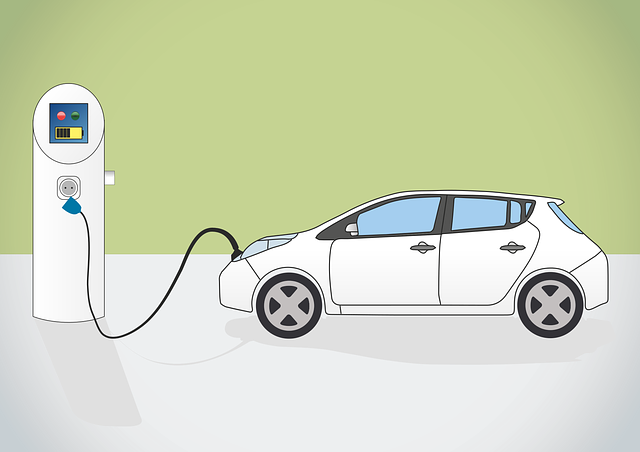Selecting EV charging stations involves understanding Level 1 and Level 2 chargers, considering speed, power output, and vehicle compatibility. Apps help locate stations. Home installation requires assessing electrical capacity and choosing suitable suppliers. Optimal location ensures efficiency and cost-effectiveness. Follow local standards, test after installation, and maintain clear access for safe charging.
“Discover how to transform your home into a convenient electric vehicle (EV) charging hub with our comprehensive installation guide. From understanding various EV charging station types and ensuring compatibility to choosing the ideal location and selecting the right equipment, this article covers all bases. Learn how to assess your home’s electrical capacity, navigate safety considerations, and follow a step-by-step process for successful EV charger installation. Empower yourself to make an informed decision when selecting EV charging stations.”
- Understanding EV Charging Stations: Types and Compatibility
- Assessing Your Home's Electrical Capacity for Installation
- Choosing the Right Location for Optimal Charging Efficiency
- Selecting the Best EV Charging Station for Your Needs
- Step-by-Step Guide to Installing an EV Charger at Home
- Post-Installation Testing and Safety Considerations
Understanding EV Charging Stations: Types and Compatibility

Selecting an EV charging station involves understanding the different types available and ensuring compatibility with your electric vehicle (EV). There are primarily two categories: Level 1 chargers, which use standard household outlets and are suitable for slower charging at home or work; and Level 2 chargers, also known as 240-volt chargers, that provide faster charging and are often installed in dedicated spaces like garages.
When choosing a station, consider factors like charging speed, power output (measured in kilowatts), and the EV’s onboard charger compatibility. Modern EVs usually come with on-board chargers designed to work with specific charging types. Popular EV charging apps for both Android and iPhone can help you locate compatible charging stations via ev charging infrastructure mapping software, making it easier to plan your charging stops during longer trips.
Assessing Your Home's Electrical Capacity for Installation

Before installing an EV charger at home, it’s crucial to assess your property’s electrical capacity to ensure a safe and efficient setup. The first step is to evaluate your current electrical system and understand its capabilities. Check with your local utility company or an electrician to determine the maximum amperage your circuit can handle. This information will guide you in selecting the right EV charging stations, as different models have varying power requirements.
When considering EV charging equipment suppliers, look for those offering a range of options suitable for residential settings. Modern EV charging technology has advanced beyond traditional wired setups; wireless EV charging technology is now available, providing a convenient and sleek alternative. Additionally, many employers are recognizing the benefits of installing ev charging stations at workplaces to encourage electric vehicle adoption among their workforce.
Choosing the Right Location for Optimal Charging Efficiency

When installing an EV charger at home, selecting the ideal location is key to achieving optimal charging efficiency. The chosen spot should be easily accessible for all-electric vehicles (EVs) and ideally situated in a well-ventilated area, considering the safety and performance of the charging station. Additionally, consider proximity to electrical outlets and your home’s main electrical panel to minimize ev charging costs.
For maximum convenience, select EV charging stations that offer wireless EV charging technology, eliminating the need for messy cables and connectors. This not only enhances the overall user experience but also contributes to better organization and potential future upgrades. Remember, proper planning in terms of location can save you from unnecessary ev charging access issues down the line, ensuring a seamless and efficient charging process for your electric vehicle.
Selecting the Best EV Charging Station for Your Needs

When selecting an EV charging station for your home, consider your vehicle type and charging needs. Different electric vehicles (EVs) support various charging standards, such as Level 1 (120V), Level 2 (240V), or fast DC Fast Charging (DCFC). Ensure the charging equipment suppliers offer products compatible with your specific EV model. The choice of charger also depends on factors like your daily driving distance and how quickly you need to recharge during at-home or public charging sessions.
Utilising ev charging infrastructure mapping software can help identify nearby charging stations, allowing you to balance convenience and speed with cost. Keep in mind the recommended charging standards by country for optimal performance and safety. Selecting the right EV charging station involves a combination of understanding your vehicle’s requirements and exploring ev charging equipment suppliers who align with your needs, ultimately fostering a seamless transition to electric mobility.
Step-by-Step Guide to Installing an EV Charger at Home

Installing an EV (Electric Vehicle) charger at home is a straightforward process that can be accomplished in several simple steps. First, assess your needs and select an EV charging station suitable for your space and vehicle type. Consider factors like charging speed, compatibility with different EV models, and the overall aesthetics to ensure ev charging access for all-electric vehicles. Once you’ve chosen the right station, check local ev charging regulations and policies to understand any permits or guidelines required for installation.
Next, prepare your home’s electrical system for the new charger. This might involve upgrading circuit breakers or installing a dedicated circuit to handle the charging station’s power requirements. Ensure proper grounding and wiring to maintain safety standards. Compare ev charging costs from different providers and plan for potential incentives or rebates available in your area. With the right setup, you’ll be well-prepared to support your electric vehicle and contribute to a greener future.
Post-Installation Testing and Safety Considerations

After successfully installing your EV charger, it’s crucial to conduct thorough testing to ensure its proper functionality and safety. Start by plugging in a compatible electric vehicle (EV) to confirm that the charging station is operational. Verify the charging speed using relevant EV charging apps for iPhone or other available tools to check if it aligns with the expected efficiency and power delivery standards. Different countries have established EV charging standards, so ensure your station adheres to these local regulations.
Safety should always be a top priority when dealing with electrical installations. Check all connections for any signs of damage or loose wires. Confirm that the circuit breaker or fuse associated with the charger is in good working order and rated appropriately for the charger’s power output. Regularly inspect the area around the charging station to prevent accidental obstructions, ensuring clear access for both vehicle connection and maintenance.
Installing a home EV charger is a significant step towards embracing electric vehicles. By following this comprehensive guide, you’ve learned about charging stations’ types, electrical requirements, ideal placement, and safety. Now, with the right equipment and knowledge, you can select and install the best EV charging station for your needs, ensuring a seamless transition to eco-friendly transportation. Remember, a well-planned installation offers efficient charging at home, contributing to both environmental conservation and convenience.
